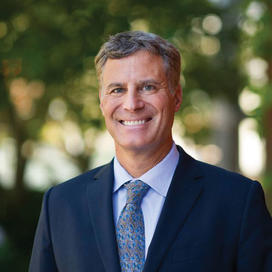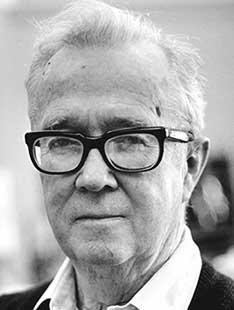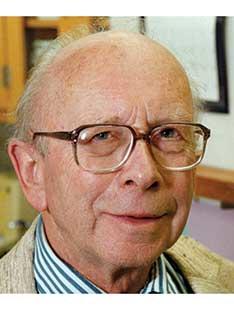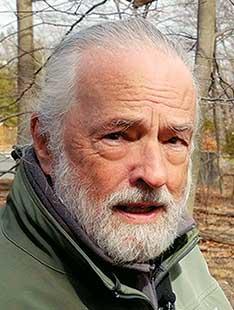In Memoriam: Alan B. Krueger, William Paul Jacobs, Arthur Pardee, Henry Horn

ALAN B. KRUEGER, one of the nation’s leading labor economists and a faculty member for more than 30 years, died March 16 in Princeton at the age of 58. A family statement said his death was a suicide.
“Alan changed the field of economics with his innovative empirical approaches to studying a wide range of topics — from the minimum wage and education, to terrorism and ticket prices at rock concerts. He also was a diligent and dedicated public servant,” said Cecilia Rouse, dean of the Woodrow Wilson School. Krueger also researched the correlation across generations of high economic inequality and low economic mobility, which he termed the “Great Gatsby curve,” and the influence of the “gig economy” (such as driving for Uber or Lyft) on the national economy. His research on the minimum wage found that if set at a moderate level — say $12 per hour, he wrote in 2015 — it would have little or no effect on unemployment.
In Washington, Krueger held the positions of chief economist of the Labor Department, assistant secretary of the treasury, and chair of the Council of Economic Advisers in the administrations of Bill Clinton and Barack Obama. He also was the founding director of the Princeton University Survey Research Center. His latest book, Rockonomics: A Backstage Tour of What the Music Industry Can Teach Us About Economics and Life, will be published in June. See http://bit.ly/krueger-2014 for a PAW feature about Krueger.

Biology professor emeritus WILLIAM PAUL JACOBS died March 3 in Princeton. He was 99. Jacobs joined the faculty in 1948 and became emeritus in 1989. He studied hormonal control of plant development and was an early proponent of quantitative techniques in that field. Jacobs published 165 papers and a book, Plant Hormones and Plant Development, and received an award from the American Society of Plant Biologists for his work in plant physiology. His 1955 paper “What Makes Leaves Fall” was published in Scientific American.

Former biomedical sciences professor ARTHUR PARDEE died Feb. 24 in Boston. He was 97. Pardee was a faculty member from 1961 to 1975, serving as chair of the biomedical sciences department (later known as the Department of Molecular Biology). Pardee was a world-renowned cancer biologist whose research changed the understanding of molecular biology and cell growth. His work included the first report of ribosomes in bacteria in 1952, and he demonstrated the presence of what became known as messenger RNA in 1954.

Professor emeritus of ecology and evolutionary biology HENRY HORN died March 14 in Princeton. He was 77. Horn joined the faculty in 1966 and retired in 2011. He was the founding director of the Program in Environmental Studies. Among his research interests were the spatial patterns of trees and forest succession, and he had a longtime fascination with butterfly behavior. He was an expert on the ecology of the Princeton campus and the Institute Woods surrounding the Institute for Advanced Study; in recent years he led a popular weekly nature tour at the University.











7 Responses
Philipp C. Bleek ’99
6 Years AgoFaculty Remembrances
I was saddened to read about Professor Alan Krueger’s passing. He was assigned as the second reader on my Woodrow Wilson School senior thesis, which examined market incentives in environmental policy. I remember being struck by Professor Krueger’s evident intellect, but what really stays with me was the kindness and gentleness with which he conveyed constructive criticism.
I’m reminded of the Maya Angelou quote: “I’ve learned that people will forget what you said, people will forget what you did, but people will never forget how you made them feel.”
Ted Georgian ’74
6 Years AgoFaculty Remembrances
I was saddened to hear of the death of Professor Henry Horn (In Memoriam, April 10). I first met him in fall 1971, I think, while I was walking in the Institute for Advanced Study’s woods, seeking a dose of wildness. We got to talking and he showed me all the pockets of his carpenter’s overalls, useful for stowing the creatures he’d collected. As a biology major I was astonished: I’d thought biologists studied only molecules and cells. I became an ecologist that day.
Later I took Horn’s ecology course and got to know the Institute Woods intimately by crawling through the undergrowth, identifying and counting tree seedlings that would eventually grow into the forest canopy. Throughout my teaching career I’ve used Horn’s The Adaptive Geometry of Trees in lectures and subjected my students to the same forest crawl.
I recall him telling us on the first day of class that he assumed we could read the textbook on our own; he would be using class to talk about more interesting things. His droll sense of humor animated his lectures, but it wasn’t until I read the article about him in the Sept. 24, 2001, PAW that I glimpsed something of his complexity: his alter egos (J. Chester Farnsworth, Elisabeth Seaport, and others), the artwork (including my favorite, “Computer Bugs Returning from the Kill”), the love of music, the commitment to science education and local environmental concerns. I wish I’d known him better.
Editor’s note: Read David Gorchov ’80’s remembrance of Henry Horn at PAW Online.
Al Muller ’62
6 Years AgoFaculty Remembrances
It was with great sadness that I read that two of my gifted biology professors had recently died. Of note, in addition to their teaching and research accomplishments, is the coincidental timing of their passing.
Linked with a third legendary Princeton professor, we have now said goodbye, in one month, to three amazing giants of the biology world: on Feb. 7, at age 98, John Bonner (known affectionately as “Slime Mold” to generations of Princeton premeds); on Feb. 24, at age 97, Arthur Pardee; and on March 3, at age 99, Bill Jacobs (In Memoriam, March 20 and April 10). Did they also find a fountain of youth while at Princeton?
David Gorchov ’80
6 Years AgoRemembering Henry Horn
Reading of the death of professor emeritus of ecology and evolutionary biology Henry Horn brought back fond memories. Horn’s class in Adaptive Patterns of Animal Behavior was enthralling, and taught me to use the scientific literature. A visit to his office was a unique experience. On the door were photos of his collaborators, with humorous names, but these turned out to be Horn in various stages of shaving off beard and trimming hair! Inside, he indicated a lamp that required insertion of pennies, a source of amusement, at least to him. There was also the crotch of a small tree, inverted, with the bark peeled off of all but the crotch triangle - evocative yet natural!
Before I set off to do senior-thesis field work on tree succession in the N.J. Pine Barrens, I sought guidance from Horn. He invited me to his home and led me on a walk in the adjacent woods, sharing insights on reading the history of forest patches and other natural history lore. He invited me to stay for pizza-from-scratch lunch he prepared for his kids. The most memorable moment was before our walk, when he opened a cabinet to get an increment corer (to sample tree rings), and it was chock-full of inverted tree crotches!
I reconnected with Horn when I returned to Princeton in 1987 for a postdoc. He showed me some of his works of art, shown under the name "J. Chester Farnsworth" (PAW, Sept. 24, 2001). My favorite was "Evolution of the Calculator" - abacus beads, pencil bits, and adding-machine parts deposited as "fossils" beneath the emergent machine.
Cara Nakamura ’99 s*07
6 Years AgoRemembering Alan Krueger
I was introduced to Alan in 1997, when my junior paper was in shambles. My adviser suggested that I speak with Alan. What a blessing. Alan not only had dozens of questions for me to ponder, but he stayed by my side as my senior thesis adviser, my introduction to a first job, and beyond. As I am certain others will share, I would not be where I am today were it not for Alan. More than a mentor, Alan was a nurturer.
When my junior paper was failing, Alan was there. He tolerated weekly visits to his office on the A floor of Firestone. It was there that I discovered some of the University's most hidden academic gems.
When my senior thesis on tutoring in the U.S. proved interesting enough, Alan was there to push me to explore local (Princeton) and international (Japan) tutoring systems. He helped me to secure research funding, and he introduced me to the amazing Ed Freeland and the Princeton Survey Research Center.
When my inquiries into local tutoring and educational programming drew a headline in The Princeton Packet, Alan was there to quell my concern.
When I was one week away from signing an investment-banking contract, Alan suggested that I meet a man named Bill Bowen *58. When I asked "Why," Alan simply replied, "Just talk to him," therefore helping me to find my way to another great mentor. I never looked back after meeting Bill and soon became one of his research associates at the Andrew W. Mellon Foundation, a role that set me farther on the path that I continue to forge today.
I was a good enough student from Hawaii, but I was flailing a bit in 1997, when Alan started caring. He taught, encouraged, and corrected me, but always, as President Obama noted, with a kind smile. Alan's last words to me were in November 2017, when I returned to campus to celebrate the Princeton Survey Research Center's 25th anniversary. At the end of the celebration, I was on the phone with my husband in Hawaii, discussing our son's illness, when Alan and Lisa walked by me on their way home. Alan paused to make sure all was OK, I muttered something about a particularly bad ear infection, and he smiled his famous smile. Both Lisa and Alan reminded me to keep calm, as all parents go through countless ups and downs. Helping me to the end, how lucky am I.
The list of "gifts" from Alan goes on and on, but his last was a small one that he sent to my daughter, Mira, in late 2017. Attached to a water bottle printed with MIRA was a note that read "From MIRA to Mira ... Stay in touch. Alan" MIRA, the Music Industry Research Association, was one of Alan's latest contributions to the world. Without knowing about Alan's MIRA, that is the name that my husband and I were mysteriously drawn to when naming our now 6-year-old daughter in 2012. Mira is now my constant reminder of a teacher who cared so deeply and consistently, who was a tremendous mentor and friend.
To Lisa, Sydney, and Benjamin: My deepest and most heartfelt condolences. Me ke aloha menemene.
To Alan: A hui hou. Until we meet again.
Yuchen Zhang ’10
6 Years AgoRemembering Alan Krueger
Alan and I first crossed paths 2008 in Labor Economics, a course he co-taught with Professor Orley Ashenfelter. Alan was always an enthusiastic lecturer, perhaps a bit more than the students. He once told me that he contemplated moving all his courses to 8:30 a.m., so only the most passionate of students would self-select. I’m glad he only contemplated that idea.
When it came time to do my junior paper, we crossed paths again when I ended up using his and Professor Daniel Kahneman’s Princeton Affect and Time Survey dataset. He was such a good adviser that I asked him to be my senior thesis adviser. Luckily, he agreed, but little did I know I would have competition.
Twice in my life, President Obama and I have competed for Alan’s advice. The first was in 2009, when he was nominated by Obama to be assistant secretary of the Treasury for economic policy. The second was in 2011, when he was nominated by Obama to be chair of the White House Council of Economic Advisers. Alan and I had been exploring writing articles together on his Treasury days.
I think we all know who won.
On the bright side, having Alan in D.C. did mean he could give my then-83-year-old grandma a private tour of the White House. In exchange, she gave him two hand-beaded fish, one blue and one red, a bipartisan duo he displayed on a cabinet in his office.
Alan always encouraged me to take chances in life. He and Professor Kahneman shelled out 99 cents to be the first (of few) to purchase my self-published eBook. When I told him I was leaving consulting to pursue the entrepreneurial endeavor of opening a smoothie cafe in Santa Monica, he promised he’d make a trip to visit, and he did, fully endorsing our organic Boba and hot smoothies. I wish I could have organized that tennis match with Pete Sampras for Alan, who loved tennis. But that’s Alan, always happy to give more than receive.
Over the years, we’d meet on either coast, and Alan was always positive as we chatted about my and his various pivots in life.
Alan’s zest, kindness, and humbleness will never be forgotten.
Norman Ravitch *62
6 Years AgoLooking for Meaning
I did not know Professor Krueger, but his death by his own hands does sadden me. That someone who apparently could over many years be an important mentor for countless students and an excellent member of the "Dismal Science" of economics should take his own life says something. What does it say?
None of us have lives of only joy and peace. But most of us are able to overcome the bad times without taking drastic action. People die of all sorts of diseases for which there are medical solutions and medications and therapies. Those who take their own lives, at any age, how are they to be judged or considered? Some would call them cowards, thoughtless about the pain their departure would cause many others. Others see in suicide a rational choice, depending on the circumstances.
I see the failure of psychology, the failure of therapy and therapeutic medicine. The failure of learning. I respect Freud and his accomplishments, but in the eight decades since his death, I see no sign of his school or of rival schools of psychology accomplishing very much.